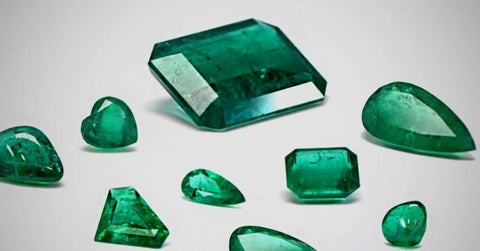The 10 most sought-after gemstones in the world :: The 10 most sought-after gemstones in the world :: The 10 most sought-after gemstones in the world CASTRO 1936
Not only in the world but locally, gemstones have re-emerged as fundamental pieces in jewelry. Whether they are diamonds or pearls, it is important to know their value, characteristics and the reason for the differences in their price. For example, some factors that can affect the value of gemstones are their size, whether they are natural or created in a laboratory, and whether they have undergone any treatment to improve their appearance. These are the 10 most valued gemstones by people all over the world:
1. Diamond

The diamond is the hardest mineral that exists in nature, this characteristic, together with the beauty and infrequency for which it is famous, make it the most expensive stone. Moreover, the rough diamond is not a very striking stone. In ancient times it was believed that colored stones possessed some special powers and that they cured diseases. Because of their beautiful colors they were also used in majestic jewelry especially for kings or nobility, nowadays these precious stones are highly valued.
Sapphire

Sapphire is a member of the corundum family. Sapphires most often occur in blue and the most vivid, pure, deep blues are the most valuable. For thousands of years, sapphire has been linked only with the color blue, its name originating from the Greek word 'sappheiros', meaning blue. however, sapphires can be found in all colors except red, red sapphires are referred to as rubies.
-
Esmeralda

The highest priced emeralds exhibit a brilliant grass-like green. Emeralds have a very good hardness of 7.5 - 8 on the mohs scale. They are known worldwide for their exquisite green hue and have been embraced by mankind for over 4,000 years.
-
Ruby

Ruby is the red manifestation of corundum; all other corundum colors are called sapphire. Because of its durability, brilliance and magical red color, it has been considered for thousands of years as one of the most valuable gemstones. Larger rubies, being rarer, fetch the highest prices. This precious mineral has a very good hardness of 9 on the mohs scale. Because of its red color, ruby is commonly associated with passion, love, power, warmth, blood and fire.
- Aquamarine

A variety of the mineral beryl. Aquamarine is named for its sea-like color, which can range from pastel blue to deep blue to greenish blue or yellowish blue. Deep blue aquamarine stones are considered to be the most valuable of their kind. Aquamarine has a good hardness of 7.5 -8 on the mohs scale.
- Amethyst

This colored stone has a hardness of 7 on mohs scale, and varies in color from light lilac to deep purple. Amethyst is very sensitive to heat and sunlight. It can lose all its color when exposed to strong ultraviolet rays for long periods of time.
- Opal

The word opal comes from the Greek 'opallos', meaning "color change", referring to the color of opal that appears to vary when tilted under light. This phenomenon occurs due to an internal diffraction of light that scatters a spectrum of iridescent colors. the opal family is known for its special play of rainbow colors, and is available in an almost infinite variety of hues, including black, white, colorless, yellow, red, green, blue and multicolored. Opal averages 5.5 -6 hardness on the mohs scale.
- Topaz

Topaz is one of the most common gemstones worldwide. it has a very good hardness of 8 on the mohs scale. Topaz comes in a rainbow of colors, the most valuable of which are red, pink and orange. These stones are mined in Brazil, Pakistan and Russia.
- Moonstone

Moonstone is a member of the large family of feldspar minerals that includes about two-thirds of all stones on earth. It has a hardness of 6-6.5 on the mohs scale, and exhibits a wide range of colors from green, brown, yellow, yellow, grayish pink, rainbow and colorless to very rare blues.
- Pearl

The most valuable of all organic gemstones. Pearls are created when an oyster feels an irritating substance in the soft mouth inside its shell, then covers it with layers of nacre. Today, almost all pearls on the market are artificially cultured by inserting a small bead into the mouth of an oyster.







